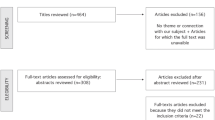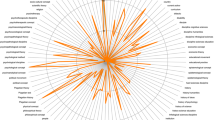Abstract
This essay is an attempt to analyze, classify and illustrate different scholarly approaches to the Sanskrit philosophical commentaries as reflected in some influential and especially thoughtful studies of Indian philosophy; at the same time it highlights some specific features involving commentary and annotation in general, drawing from results of studies on commentaries conducted in other disciplines and fields, such as Classical and Medieval Studies, Theology, and Early English Literature. In the field of South Asian Studies, philosophical commentaries may be assessed from various overlapping and not always exclusive points of view, such as preservation of otherwise lost historical information, historical authenticity and reliability, interpretational innovation, spiritual or experiential insight, philosophical creativity, intellectual liveliness, doxographic intent, degree of incidentality, expository breadth and explanatory depth. The essay provides numerous examples taken from classical to early modern philosophical literature, especially of the Brahminical and Buddhist traditions, and also discusses their diverging perception by modern scholars and interpretators.
Similar content being viewed by others
References
Aklujkar A. (1972) The authorship of the Vākyapadīya-Vṛtti. Wiener Zeitschrift für die Kunde Südasiens 16: 181–198
Aklujkar, A. (1993). Once again on the authorship of the Trikāṇḍī-Vṛtti. Asiatische Studien/É tudes Asiatiques, 47(1), 45–57.
Bronkhorst J. (1988) Études sur Bhartṛhari. 1. L’auteur et la date de la Vṛtti. Bulletin d’Études Indiennes 6: 105–143
Bronkhorst, J. (1984) [1985]. Patañjali and the Yogasūtras. Studien zur Indologie und Iranistik, 10, 191–212.
Bronkhorst J. (1990) Vārttika. Wiener Zeitschrift für die Kunde Südasiens 34: 123–146
Bronkhorst, J. (1991) [1992]. Two literary conventions of Classical India. Asiatische Studien/Études Asiatiques, 45(2), 210–227.
Brückner H. (1995) Bewahren und Erneuern: Philosophische Kommentartraditionen im indischen Mittelalter. In: Assmann J., Gladigow B.(eds) Text und Kommentar: Archäologie der literarischen Kommunikation IV. München, Wilhelm Fink Verlag, pp 237–247
Chakravarti, P. (1951). Origin and development of the Sāṃkhya system of thought. Calcutta: Metropolitan Publishing and Printing House (repr. New Delhi: Munshiram Manoharlal, 1975).
Chenet, F. (1998). Le commentaire en Inde. In J.-F. Mattèi, Enyclopèdie philosophique universelle, IV: Le discours philosophique (pp. 1656–1664). Paris: Presses Universitaires de France.
de La Vallèe Poussin, L. (1923). Introduction. In L. de La Vallèe Poussin, L’Abhidharmakośa de Vasubandhu: Traduction et annotation. Tome I: Introduction, Chapitres 1 et 2. Mélanges Chinois et Bouddhiques 16 (pp. VI–LXVII). Brussels: Institut Belge des Hautes Études Chinoises. Reprint 1971.
Frauwallner E. (1936) Beiträge zur Geschichte des Nyāya. I. Jayanta und seine Quellen. Wiener Zeitschrift für die Kunde des Morgenlandes 43: 263–278
Frauwallner, E. (1953). Geschichte der indischen Philosophie (Vol. 1). Salzburg: Otto Müller.
Frauwallner, E. (1958a). Geschichte der indischen Philosophie (Vol. 2). Salzburg: Otto Müller.
Frauwallner, E. (1958b). Die Erkenntnislehre des klassischen Sāṃkhya-Systems. Wiener Zeitschrift für die Kunde Süd- und Ostasiens, 2, 84–139.
Frauwallner E. (1960) Devendrabuddhi. Wiener Zeitschrift für die Kunde Süd- und Ostasiens 4: 119–123
Frauwallner, E. (1966). Introduction. In Muni Jambuvijayaji (Ed.), Dvādaśāraṃ Nayacakraṃ of Ācārya Śrī Mallavādi Kṣamāśramaṇa with the commentary Nyāyāgamānusāriṇī of Śrī Siṃhasūri Gaṇi Vādi Kṣamāśramaṇa, Part 1. śrīĀ tmānand Jain Granthamālā 92 (pp. 1–6). Bhavnagar: Sri Jain Atmanand Sabha.
Frauwallner, E. (1968). Materialien zur ältesten Erkenntnislehre der Karmamīmāṃsā. Österreichische Akademie der Wissenschaften, philosophisch-historische Klasse, Sitzungsberichte 259,2. Wien: Hermann Böhlaus Nachf.
Frauwallner, E. (1982). Kleine Schriften. G. Oberhammer & E. Steinkellner (Eds.), Glasenapp-Stiftung 22. Wiesbaden: Franz Steiner.
Frauwallner, E. (1994). Die Philosophie des Buddhismus (4th ed.). Berlin: Akademie Verlag.
Hadot, I. (2002). Der fortlaufende philosophische Kommentar in der Antike. In W. Geerlings & C. Schulze (Eds.), Der Kommentar in Antike und Mittelalter: Beiträge zu seiner Erforschung. Clavis commentariorum antiquitatis et medii aevi 2 (pp. 183–199). Leiden: Brill.
Halbfass W. (1988) India and Europe: An essay in understanding. State University of New York Press, Albany
Hanna III, R. (1991). Annotation as social practice. In S. A. Barney (Ed.), Annotation and its text (pp. 178–184). Oxford: Oxford University Press.
Hattori, M. (1968). Dignāga, On perception. Harvard Oriental Series 47. Cambridge, MA: Harvard University Press.
Houben, J. E. M. (1997) [1998]. The Vṛtti and Vṛṣabhadeva’s Paddhati on Vākyapadīya 1.46a ātmabhedaṃ/ātmabhedas .... Annals of the Bhandarkar Oriental Research Institute, 78, 177–198.
Houben, J. E. M. (1999). On syntactic and stylistic evidence regarding the authorship of the Vākyapadīya-Vṛtti. Wiener Zeitschrift für die Kunde Südasiens, 43, 167–197.
Ihm, S. (2002). Untersuchungen zu einer Typologisierung medizinischer Kommentare. In W. Geerlings & C. Schulze (Eds.), Der Kommentar in Antike und Mittelalter: Beiträge zu seiner Erforschung. Clavis commentariorum antiquitatis et medii aevi 2 (pp. 315–333). Leiden: Brill.
Ingalls, D. H. H. (1951). Materials for the study of Navya-Nyāya logic. Harvard Oriental Series 40. Cambridge, MA: Harvard University Press.
Joshi, L. V. (1986). A critical study of the Pratyakṣa Pariccheda of Bhāsarvajña’s Nyāyabhūṣaṇa. Ahmedabad: Gujarat University.
Larson, G. J. & Bhattacharya, R. S. (Eds.). (1987). Sāṃkhya: A dualistic tradition in Indian philosophy, Encyclopedia of Indian Philosophies 4. Delhi: Motilal Banarsidass.
Lawler T. (1991) Medieval annotation: The example of the commentaries on Walter Map’s Dissuasio Valerii. In: Barney S.A.(eds) Annotation and its text. Oxford University Press, Oxford, pp 94–107
Lindtner C. (1982) Adversaria Buddhica. Wiener Zeitschrift für die Kunde Südasiens 26: 167–194
Luppe, W. (2002). Σχóλια, ὑπoΣμνήματα und ὑπoΣηέσετς zu griechischen Dramen auf Papyri. In W. Geerlings & C. Schulze (Eds.), Der Kommentar in Antike und Mittelalter: Beiträge zu seiner Erforschung. Clavis commentariorum antiquitatis et medii aevi 2 (pp. 55–77). Leiden: Brill.
Maas, P. (2006). Samādhipāda: Das erste Kapitel des Pātañjalayogaśāstra zum ersten Mal kritisch ediert. Aachen: Shaker Verlag.
Marui H. (1985). A study of the textual problems of the Padārthadharmasaṃgraha. Tōhō 1:106–120
Matilal, B. K. (1968). The Navya-Nyāya doctrine of negation: The semantics and ontology of negative statements in Navya-Nyāya philosophy. Harvard Oriental Series 46. Cambridge, MA: Harvard University Press.
Matilal, B. K. (1977). Nyāya–Vaiśeṣika. A History of Indian Literature VI,2. Wiesbaden: Otto Harrassowitz.
Mishra, U. (1966). History of Indian philosophy (Vol. 2). Allahabad: Tirabhukti Publications.
Narayanan, T.K. (1992). Nyāyasāra of Bhāsarvajña (A critical study). New Delhi: Mittal Publications.
Nozawa, M. (1975). The Vaiśeṣikasūtra referred to in the Padārthadharmasaṃgraha. Journal of Indian and Buddhist Studies, 24(2), 1000–1006.
Preisendanz, K. (1989). On ātmendriyamanorthasannikarṣa and the Nyāya–Vaiśeṣika theory of vision. Berliner Indologische Studien, 4/5, 141–213.
Preisendanz, K. (1994) [1995]. Vaiśeṣikasūtra IV.1.9 and its two traditions of interpretation. Asiatische Studien/Études Asiatiques, 48(2), 867–890.
Preisendanz, K. (2005). The production of philosophical literature in South Asia during the pre-colonial period (15th to 18th centuries): The case of the Nyāyasūtra commentarial tradition. Journal of Indian Philosophy, 33, 55–94.
Radhakrishnan, S. (1993). Indian philosophy. Centenary Edition (6th ed., 2 Vols). Delhi: Oxford University Press.
Ruben, W. (1928). Die Nyāyasūtra’s. Abhandlungen für die Kunde des Morgenlandes 18,2. Leipzig: Deutsche Morgenländische Gesellschaft.
Ruegg, D. S. (1990). On the authorship of some works ascribed to Bhāvaviveka/Bhavya. In D. S. Ruegg, & L. Schmithausen (Eds.), Earliest Buddhism and Madhyamaka. Panels of the VIIth World Sanskrit Conference 2 (pp. 59–71). Leiden: E.J. Brill.
Sāṅkṛityāyana, R. (1938–1940). Dharmakīrti’s Pramān: avārttika with a commentary by Manorathanandin. Appendix to Journal of the Bihar and Orissa Research Society, 24–26.
Shah, N. J. (1972). Introduction. In N. J. Shah (Ed.), Cakradhara’s Nyāyamañjarīgranthibhaṅga. L.D. Series 35 (pp. 1–14). Ahmedabad: L.D. Institute of Indology.
Steinkellner, E. (1961). Die Literatur des älteren Nyāya. Wiener Zeitschrift für die Kunde Süd- und Ostasiens, 5, 149–162.
Steinkellner, E. (1967). Einleitung. In E. Steinkellner (Ed.), Dharmakīrti’s Hetubinduḥ. Teil 1: Tibetischer Text und rekonstruierter Sanskrit-Text. Österreichische Akademie der Wissenschaften, philosophisch-historische Klasse, Sitzungsberichte, 252,1 (pp. 17–28). Wien: Hermann Böhlaus Nachf.
Steinkellner, E. (2004). A tale of leaves: On Sanskrit manuscripts in Tibet, their past and their future. 2005 Gonda Lecture. Amsterdam: Royal Netherlands Academy of Arts and Sciences.
Strauss O. (1925) Indische Philosophie. In: Kafka G.(eds) Geschichte der Philosophie in Einzeldarstellungen. München, Ernst Reinhardt
Suzuki, K. (2004). A transliteration of the Sanskrit notes on the Catuḥśatakaṭīkā in the * Lakṣaṇaṭīkā. In H. W. Bodewitz & M. Hara (Eds.), Gedenkschrift J. W. de Jong. Studia Philologica Buddhica, Monograph Series 17 (pp. 189–206). Tokyo: The International Institute for Buddhist Studies of The International College for Advanced Buddhist Studies.
Thakur, A. (1961). Introduction. In Muni Śrī Jambuvijayajī (Ed.), Vaiśeṣikasūtra of Kaṇāda with the commentary of Candrānanda. Gaekwad’s Oriental Series 136 (pp. 1–23). Baroda: Oriental Institute.
Thakur, A. (2003). Origin and development of the Vaiśeṣika system. History of Science, Philosophy and Culture in Indian Civilization III, 4. New Delhi: Centre for Studies in Civilizations.
Von Glasenapp, H. (1974). Die Philosophie der Inder. Kröners Taschenausgabe 195 (3rd edition). Stuttgart: Alfred Kröner.
Von Stietencron, H. (1995). Typisierung und Sitz im Leben: Anmerkungen zum Kommentar in Indien. In J. Assmann & B. Gladigow (Eds.), Text und Kommentar: Archäologie der literarischen Kommunikation IV (pp. 249–255). München: Wilhelm Fink Verlag.
Wezler, A. (1975). Zur Identität der “Ācāryāḥ” und “Vyākhyātāraḥ” in Jayantabhaṭṭas Nyāyamañjarī. Wiener Zeitschrift für die Kunde Südasiens, 19, 135–146.
Whitehead, A. N. (1929). Process and reality. Cambridge: Cambridge University Press (repr. New York: Free Press, 1978).
Yonezawa, Y. (1999). *Lakṣaṇaṭīkā. A Sanskrit manuscript of an anonymous commentary on the Prasannapadā. Journal of Indian and Buddhist Studies, 47(2), 1024–1022.
Yonezawa, Y. (2004). *Lakṣaṇaṭīkā. Sanskrit Notes on the Prasannapadā (1). Naritasan Bukkyō Kenkyūsho Kiyō, 27, 115–154.
Yonezawa, Y. (2005). *Lakṣaṇaṭīkā. Sanskrit Notes on the Prasannapadā (2). Naritasan Bukkyō Kenkyūsho Kiyō, 28, 159–179.
Zimmer, H. (1951). Philosophies of India. Ed. J. Campbell, New York: Bollingen Foundation (repr. New York: Meridian Books, 1956).
Author information
Authors and Affiliations
Corresponding author
Rights and permissions
About this article
Cite this article
Preisendanz, K. Text, Commentary, Annotation: Some Reflections on the Philosophical Genre. J Indian Philos 36, 599–618 (2008). https://doi.org/10.1007/s10781-008-9036-x
Published:
Issue Date:
DOI: https://doi.org/10.1007/s10781-008-9036-x




